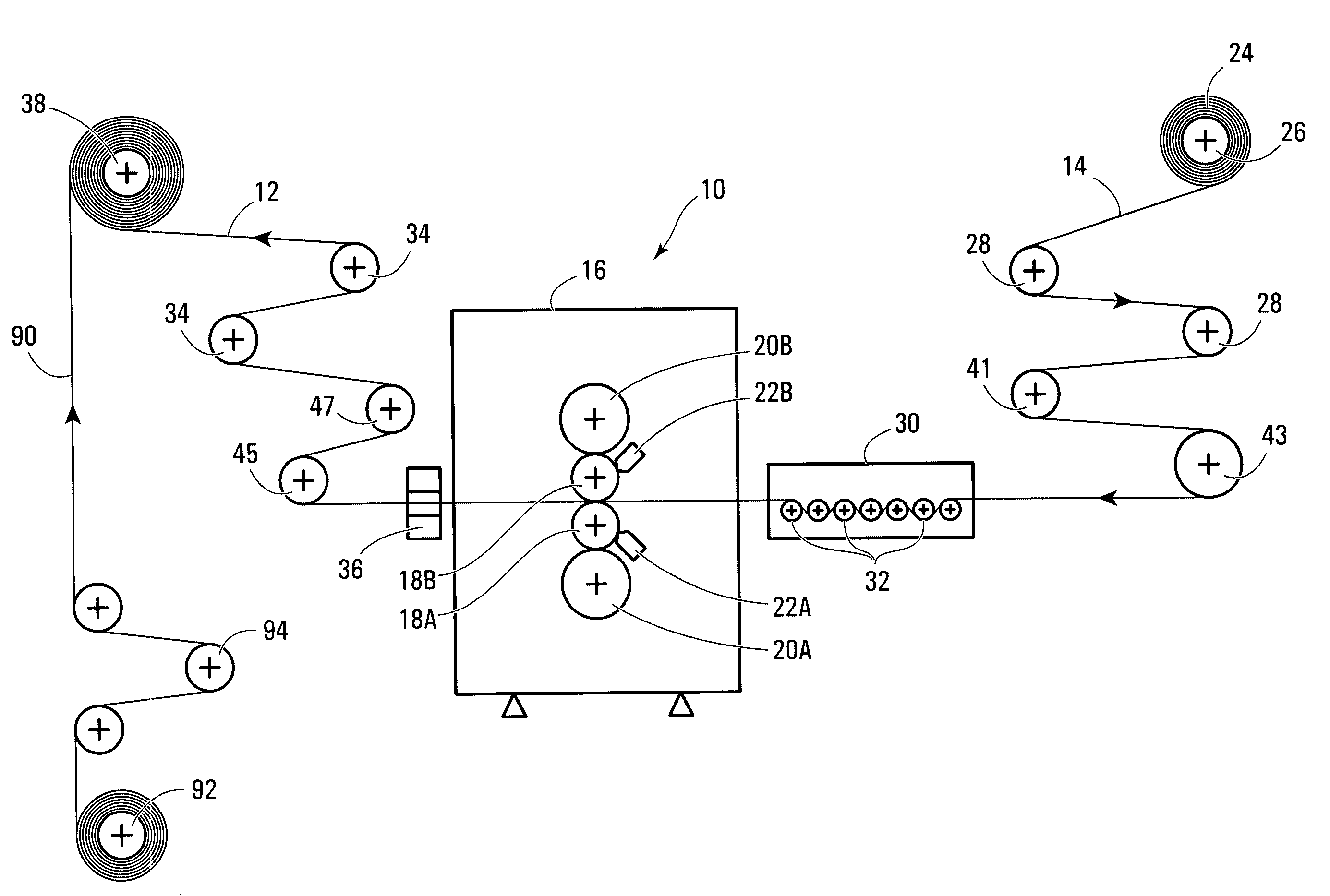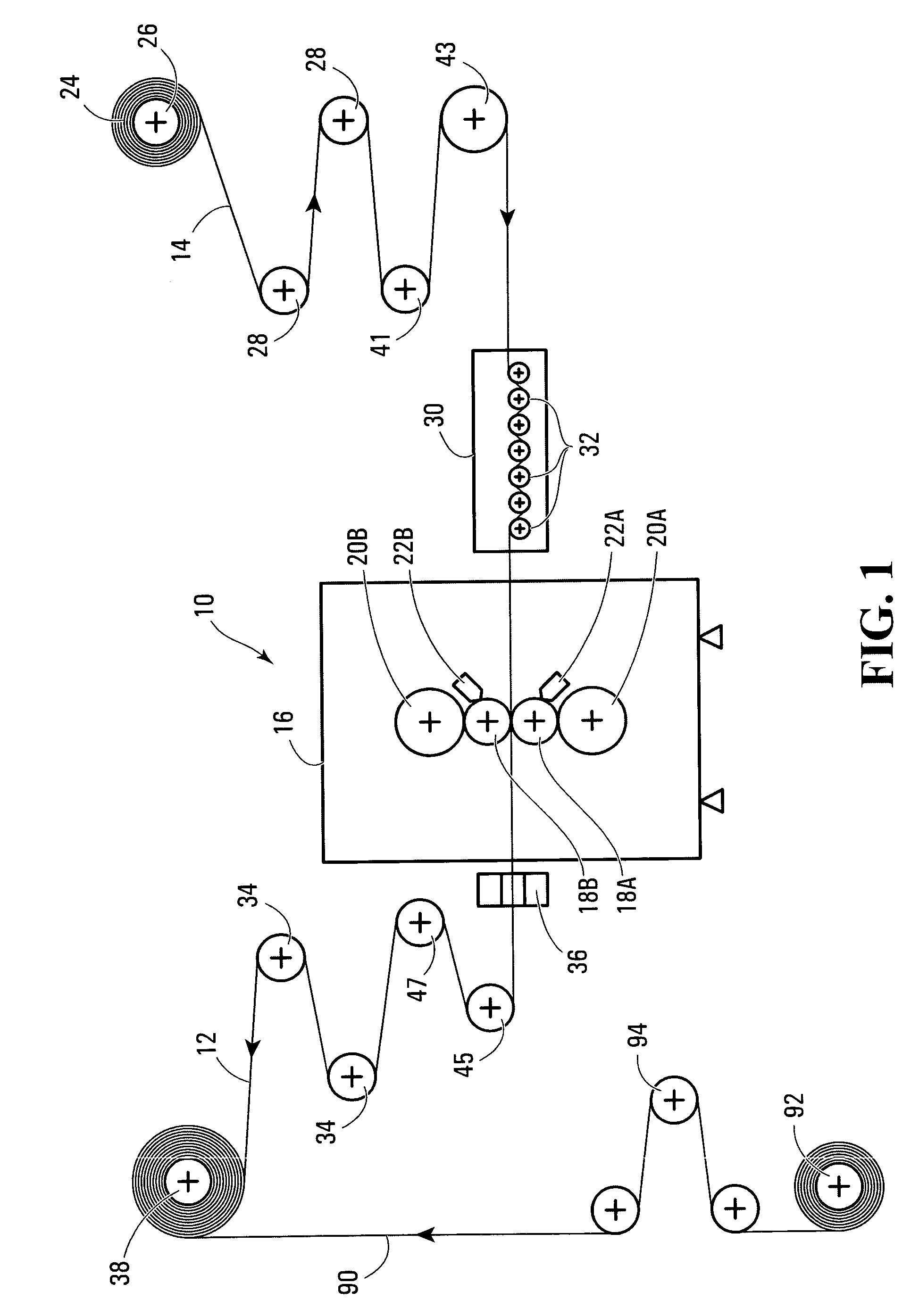Lamination process and apparatus for alkali metals or alloys thereof
a technology of alkali metals and alloys, applied in the direction of sustainable manufacturing/processing, measuring devices, profile control devices, etc., can solve the problems of minuscule drawing tension, difficult to laminate lithium or alloy films to a constant thickness across the entire width of films
- Summary
- Abstract
- Description
- Claims
- Application Information
AI Technical Summary
Benefits of technology
Problems solved by technology
Method used
Image
Examples
first embodiment
[0049]FIG. 5a is a schematic front view of working rollers 18a and 18b and back-up rollers 20a and 20b in the neutral position in which working rollers 18a and 18b are linear cylinders. Back-up rollers 20a and 20b apply a pressure P onto working rollers 18a and 18b sufficient to reduce the thickness of lithium film 12 to the desired thickness while no lateral force is applied to the supporting members 54 and 56 of working rollers 18a and 18b which remain perfectly flat and even, their meeting surfaces defining a similarly flat and even lamination surfaces 70.
[0050]In FIG. 5b, back-up rollers 20a and 20b still apply a pressure P onto working rollers 18a and 18b sufficient to reduce the thickness of lithium film 12 to the desired thickness however, the central portion of working rollers 18a and 18b are dilated through heat build-up generated by friction of the lamination surfaces against the lithium sheet. To compensate this heat dilation which has deformed working rollers 18a and 18...
second embodiment
[0055]FIGS. 6a, 6b, and 6c are schematic front views of working rollers 19a and 19b and back-up rollers 20a and 20b in which working rollers 19a and 19b are curvilinear cylinders. Working rollers 19a and 19b have slightly convex profiles such that the meeting surfaces 80 of the rollers defined a lamination segment 82 a few millimeters wider than the width of the lithium film 12 being laminated. Because of the curvilinear design, the end portions of the working rollers 19a and 19b are slightly more spaced apart than those of working rollers 19a and 19b which facilitates the inward and outward bending of working rollers 19a and 19b.
[0056]FIG. 6a illustrates working rollers 19a and 19b in the neutral position. Back-up rollers 20a and 20b apply a pressure P onto working rollers 19a and 19b sufficient to reduce the thickness of lithium film 12 to the desired thickness while no lateral force is applied to the supporting members 54 and 56 of working rollers 19a and 19b. The lamination se...
PUM
| Property | Measurement | Unit |
|---|---|---|
| thick | aaaaa | aaaaa |
| thickness | aaaaa | aaaaa |
| thickness | aaaaa | aaaaa |
Abstract
Description
Claims
Application Information
 Login to View More
Login to View More - R&D
- Intellectual Property
- Life Sciences
- Materials
- Tech Scout
- Unparalleled Data Quality
- Higher Quality Content
- 60% Fewer Hallucinations
Browse by: Latest US Patents, China's latest patents, Technical Efficacy Thesaurus, Application Domain, Technology Topic, Popular Technical Reports.
© 2025 PatSnap. All rights reserved.Legal|Privacy policy|Modern Slavery Act Transparency Statement|Sitemap|About US| Contact US: help@patsnap.com



